60 Coleoptera – Adephaga
Adephaga
Adephaga is the smaller of the two Coleoptera suborders that we cover in the lab. Remember that all of these beetles have the first abdominal segment divided by the hind coxae. We will cover only four families within Adephaga, but there are several more that you could encounter in your collections.
Carabidae
One family that you will almost certainly encounter in your collections is Carabidae, the ground beetles. Carabidae are mostly active predators as both adults and larvae, although there are some species that are herbivorous seed predators. They range from extreme specialists to broad generalists, and can be sensitive bioindicators of disturbance in ecosystems.
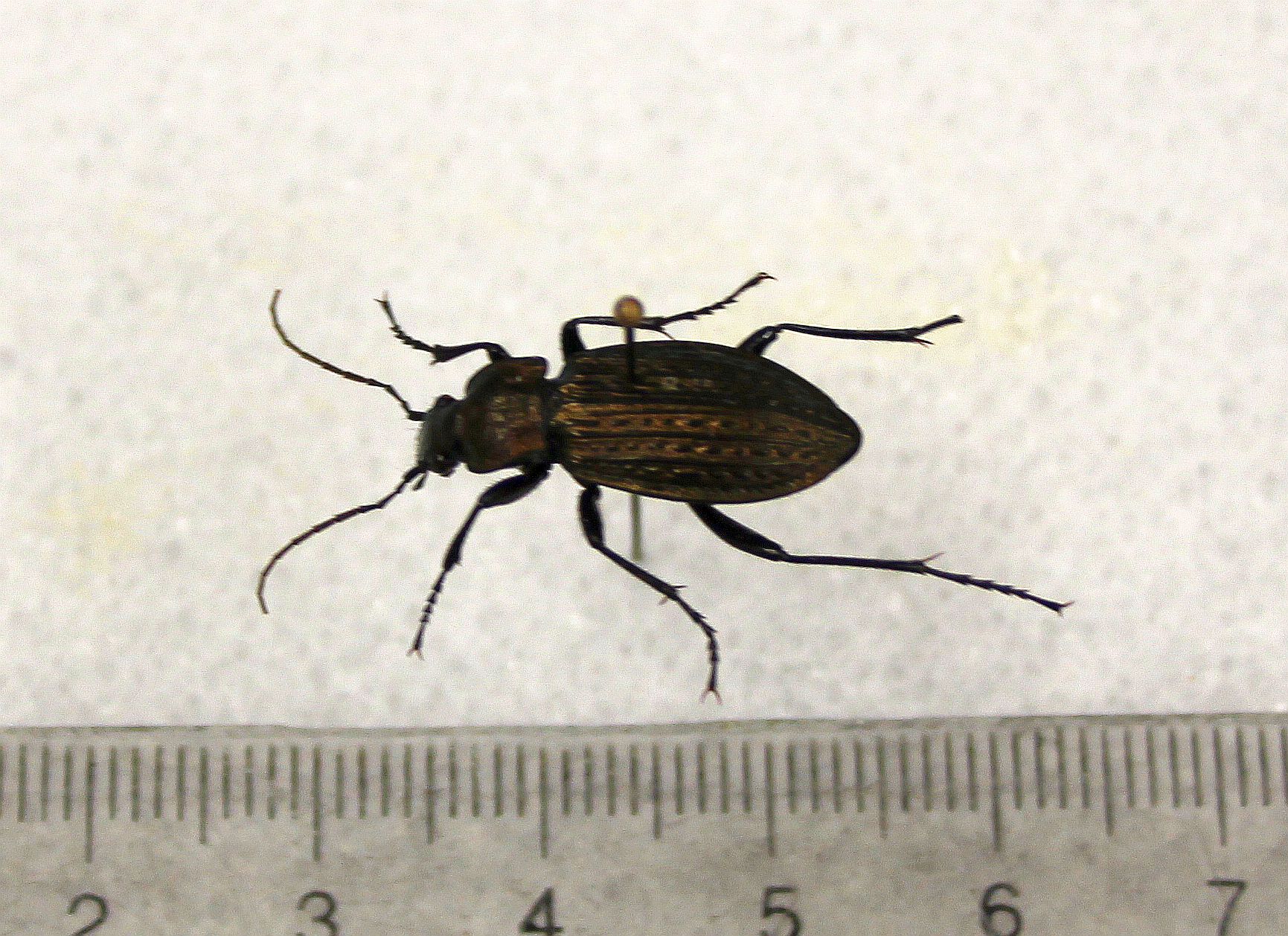
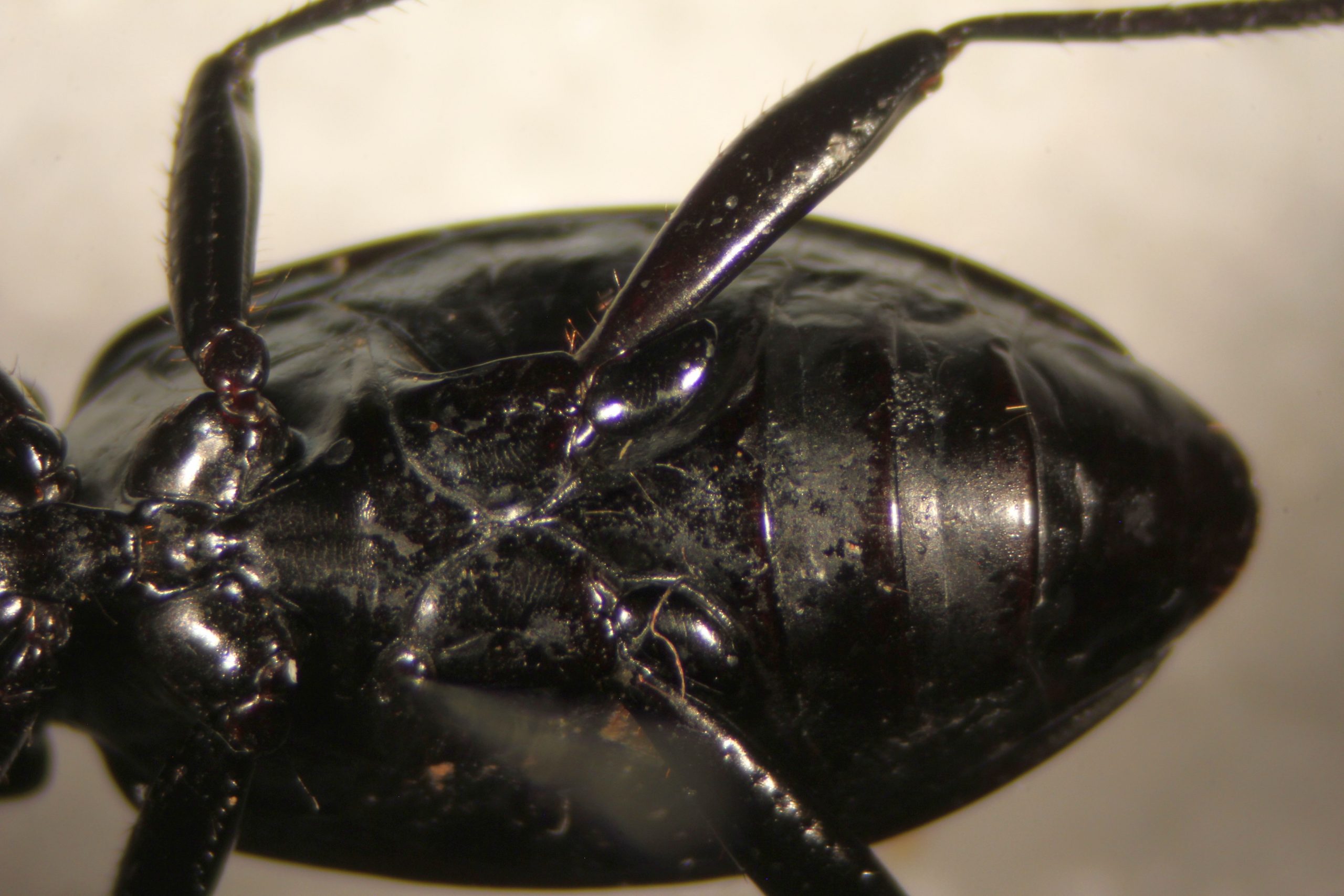

Cicindelidae
At various times in the past, Cicindelidae, the tiger beetles, have been grouped as a subfamily of the Carabidae or as a separate family. Currently, they are considered a separate family. Tiger beetles are very active predators, frequently hunting in very open habitats. They run and fly short distances in search of prey, making them challenging to catch. Notice the large, prognathous mandibles and large eyes. Many adults are iridescent and colourful. some species are endangered, mostly due to habitat alteration and loss.
Cicindelidae larvae usually live in tunnels, with their heads and mandibles resting flush with the ground. This habit allows them to grab passing insects and other prey. They are fluid-feeders, crushing their prey and secreting digestive enzymes to break it down.

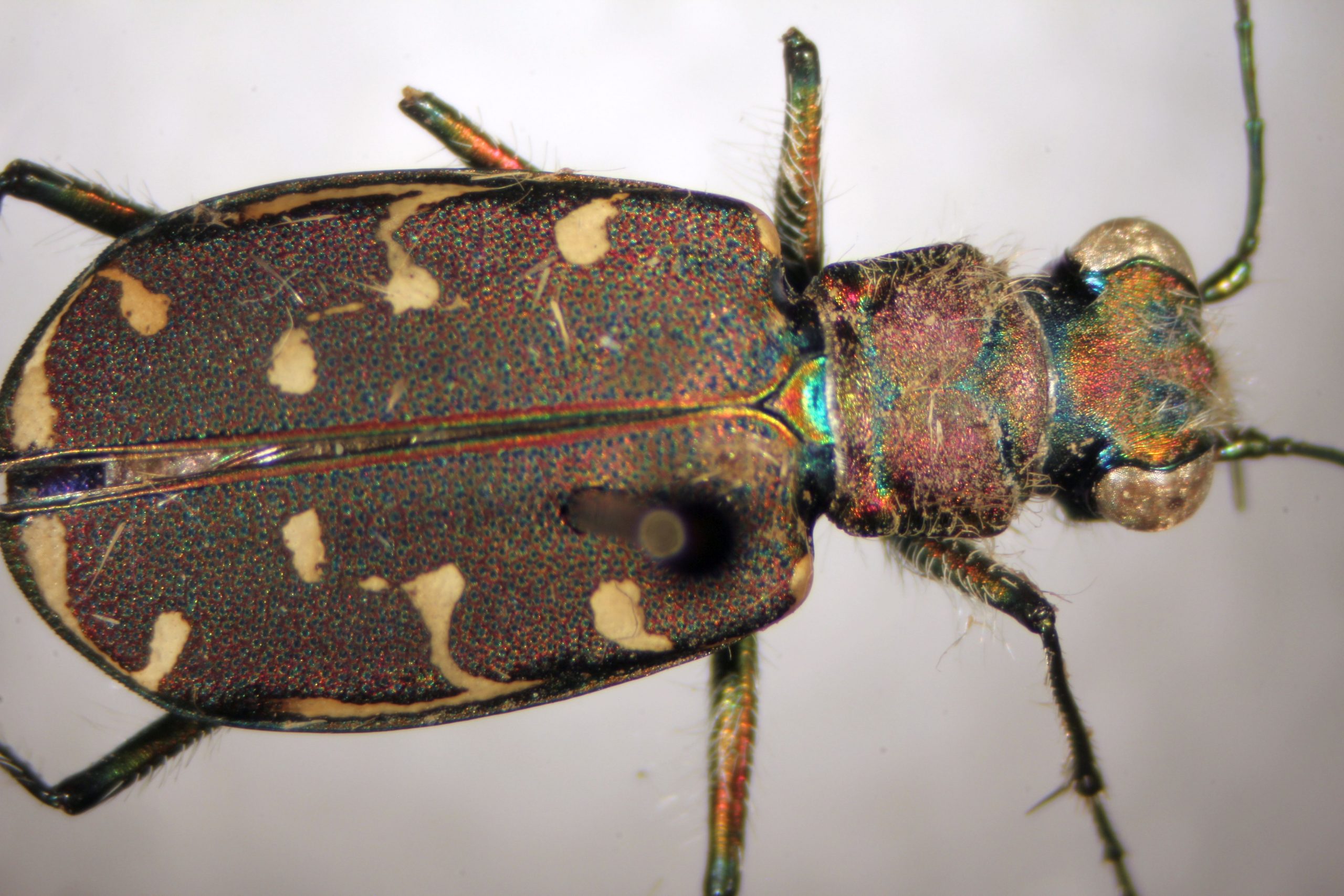
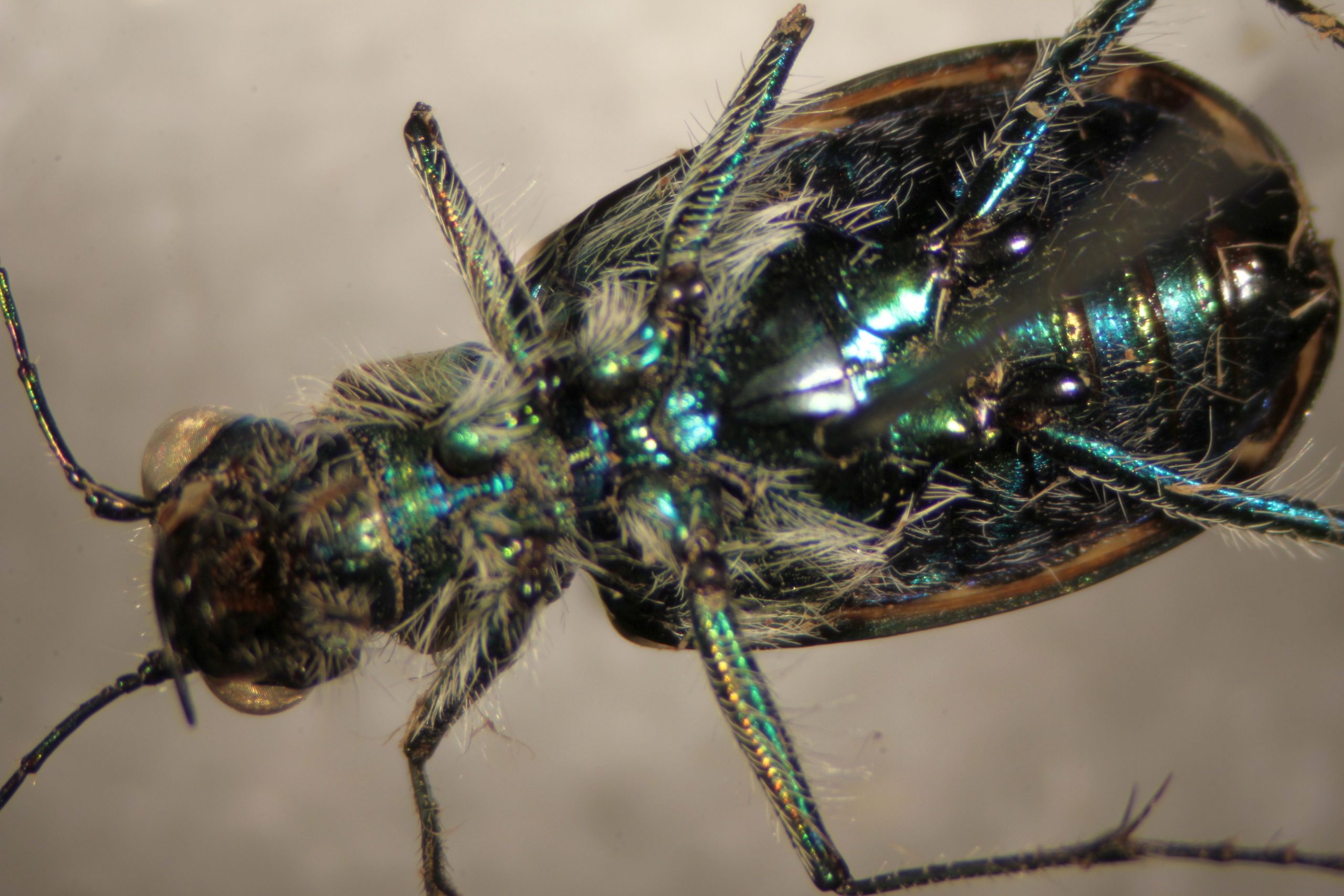
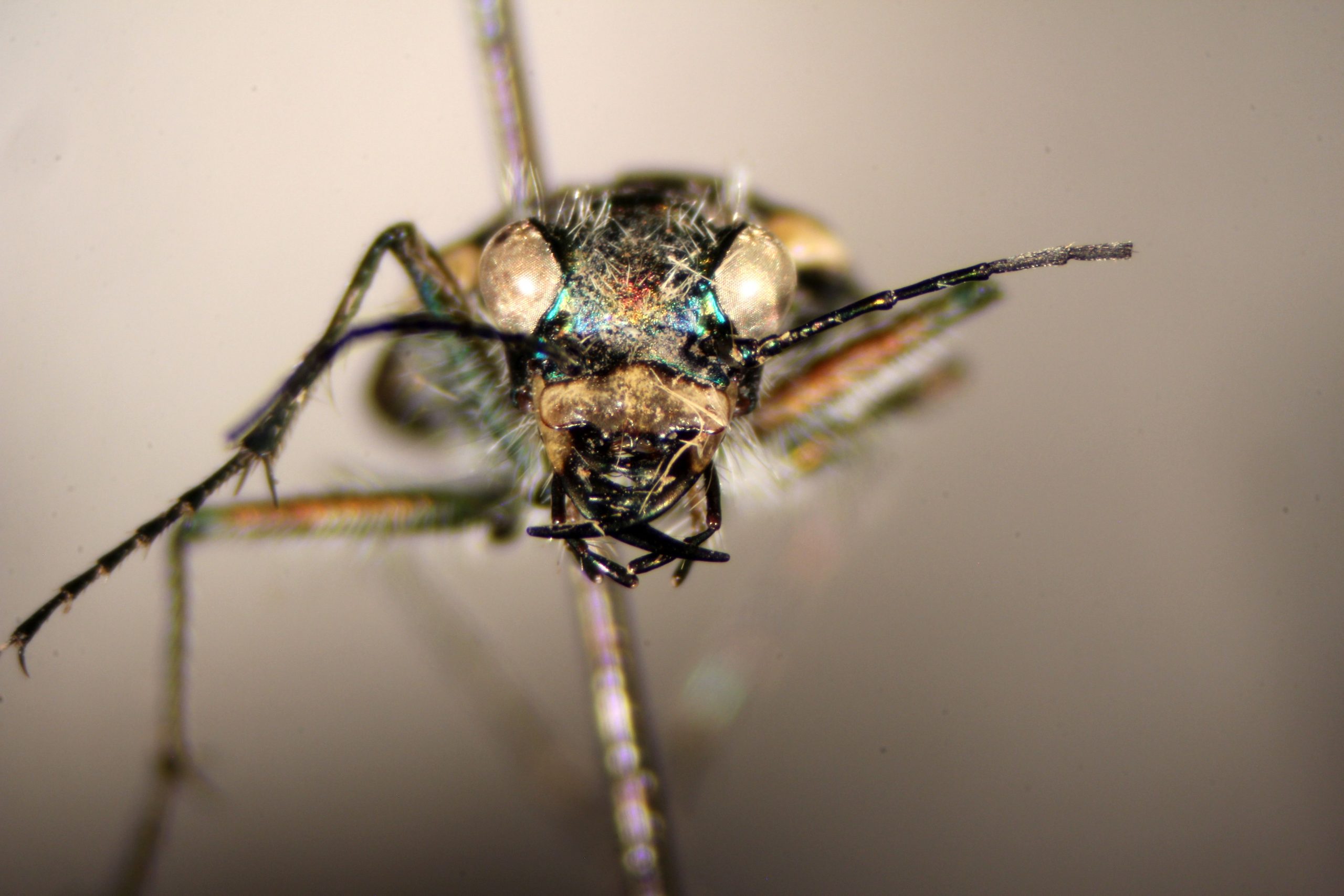
Dytiscidae
Several families of beetles are aquatic. Dytiscidae, the predaceous diving beetles, are aquatic as both larvae and adults. Their hind legs are flattened and fringed with hairs that allow them to swim efficiently. They do not have gills; instead, they swim to the surface periodically and trap an air bubble under the elytra or in body hairs. They then dive again with the bubble attached. Males can be distinguished as their fore tarsi are modified into suction cups to help hold the female during mating. Larvae are also active predators, known as water tigers.
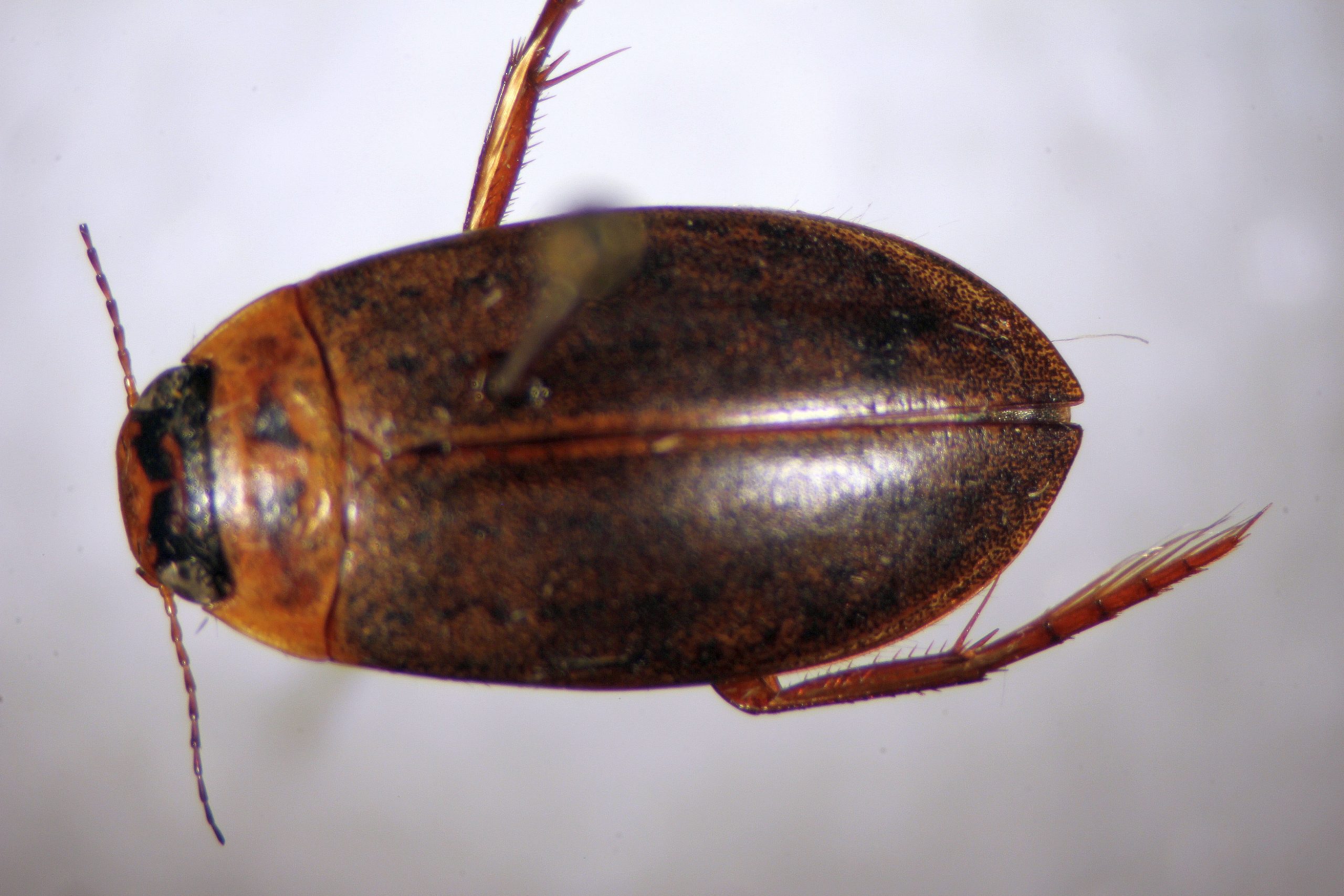
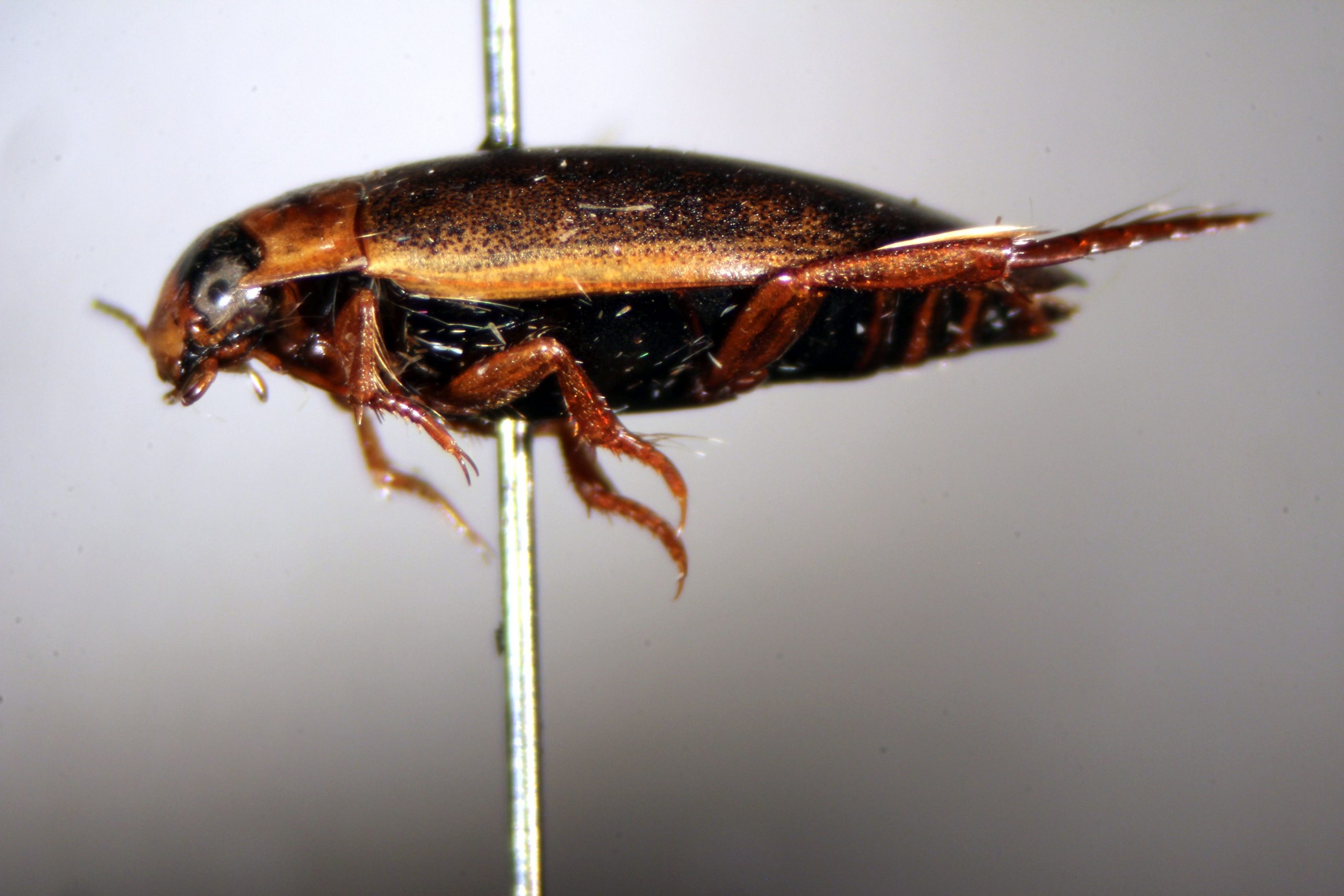
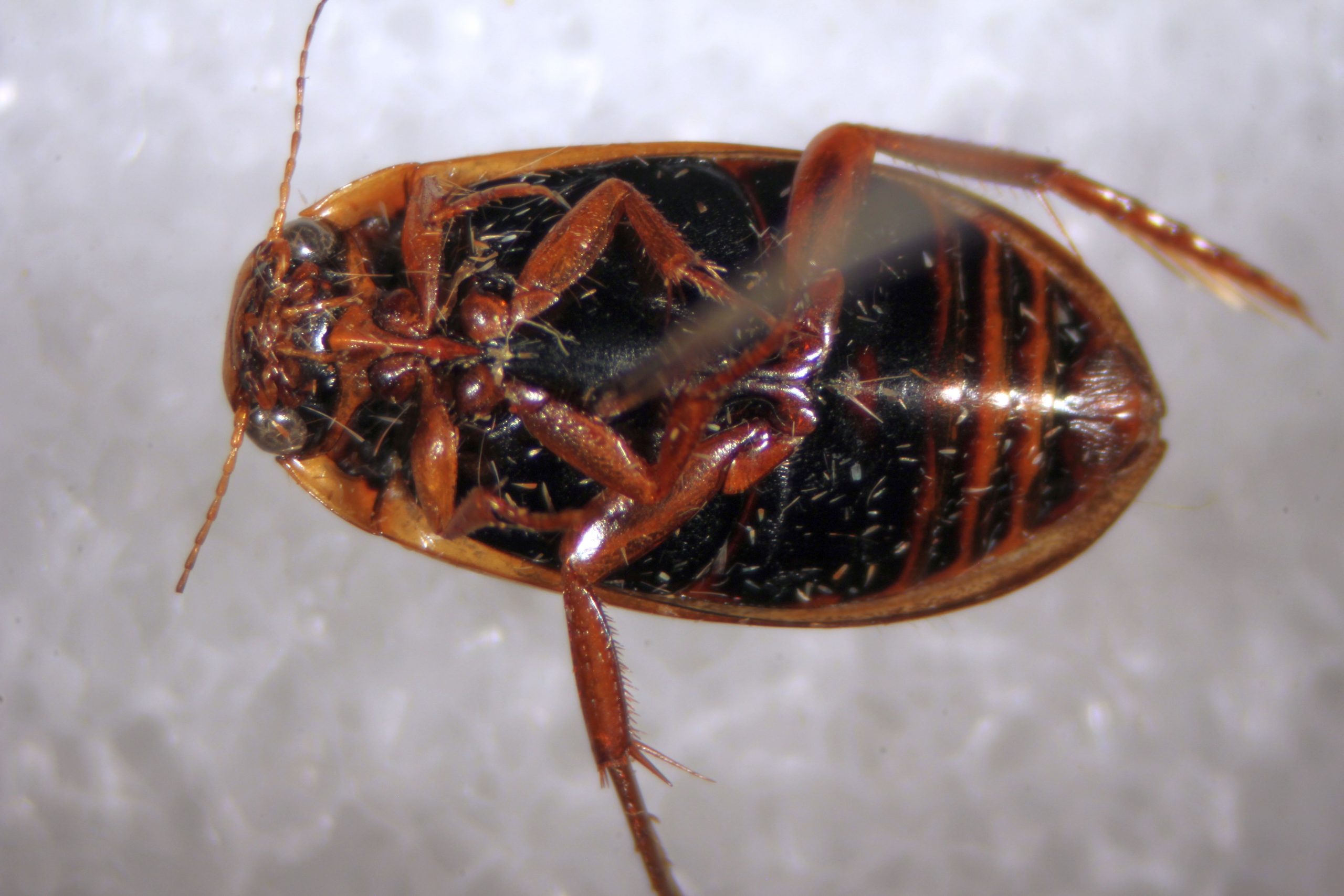
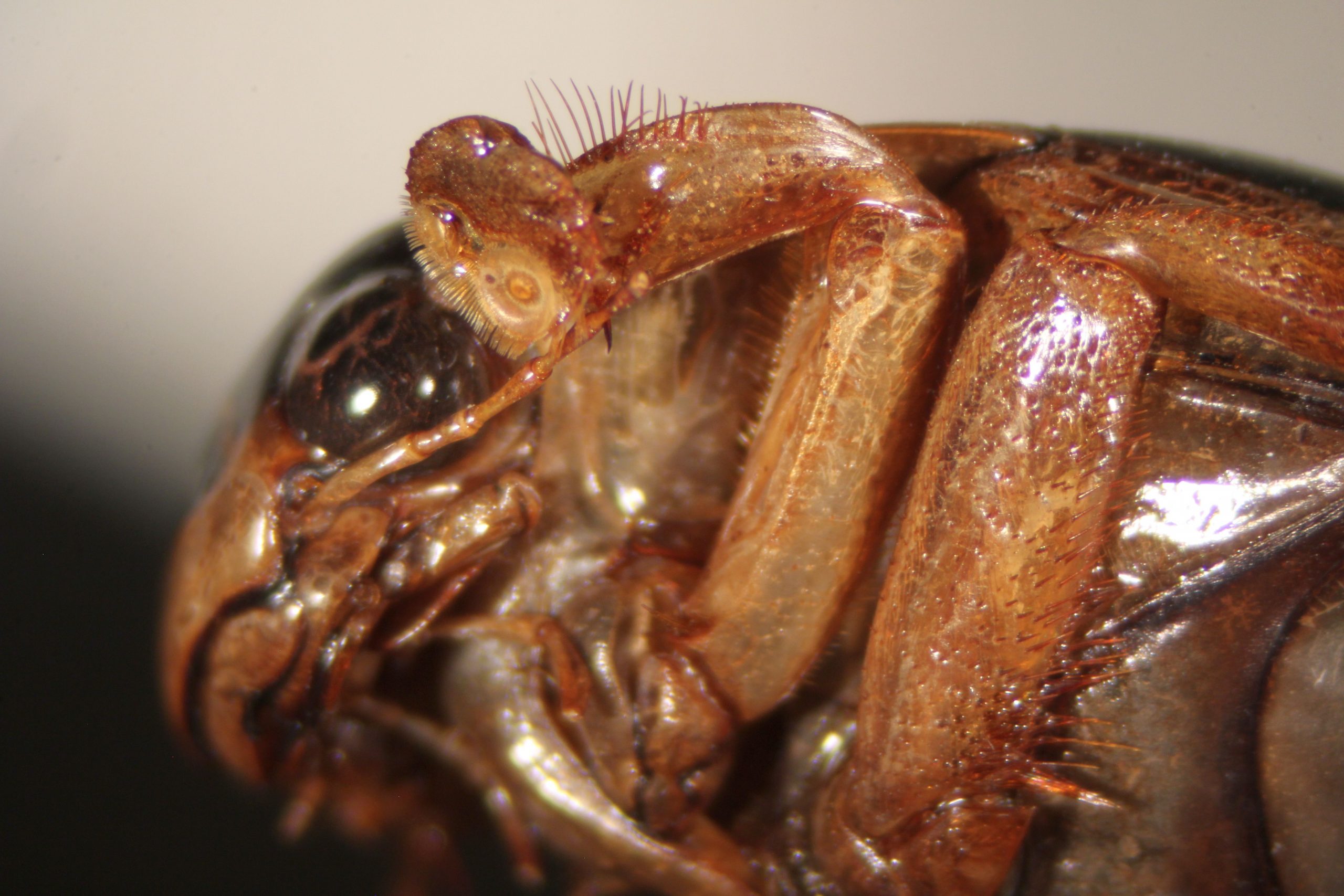
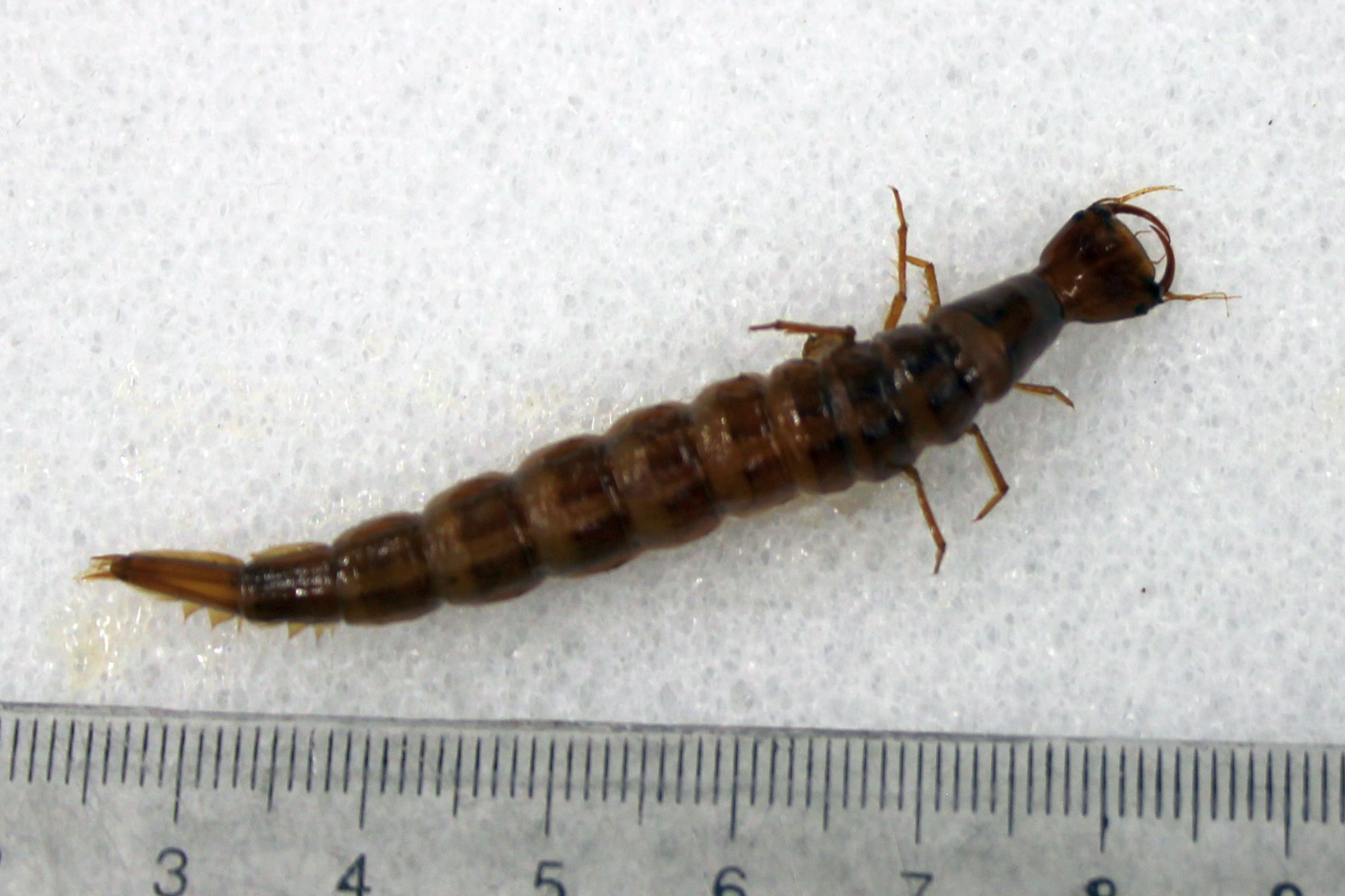
Gyrinidae
The last family we will cover in Adephaga is Gyrinidae, the whirligig beetles. These beetles are also aquatic as larvae and adults, and are also predatory. Adult whirligig beetles live on the surface of the water, and swim in random patterns when they are disturbed. They can also dive. Their eyes are split into two parts. One part is above the surface of the water to detect prey and predators coming from above, while the other part is below the surface of the water to detect food or threats from below. Whirligig beetles also have scent glands, as you may notice if you catch one.

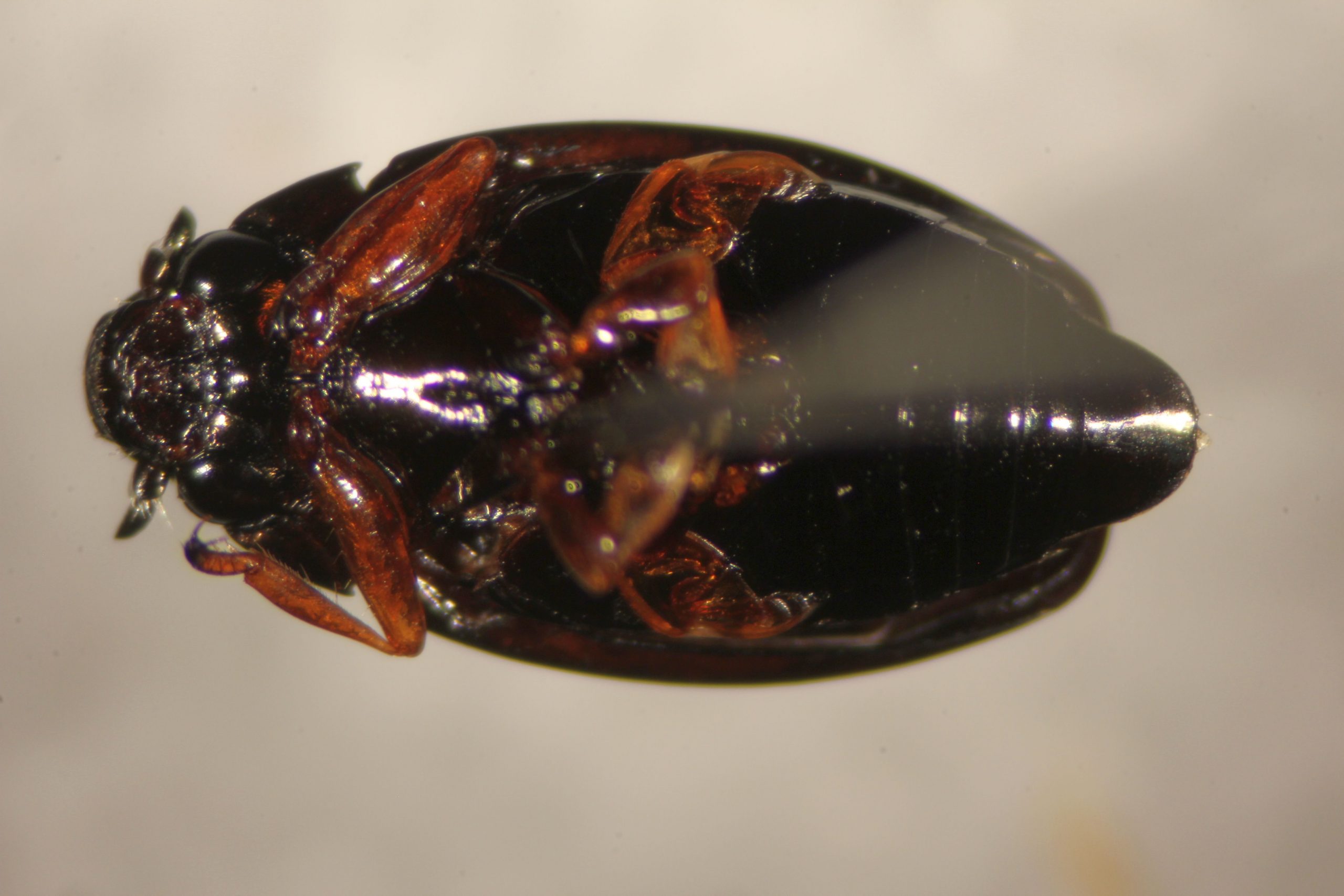
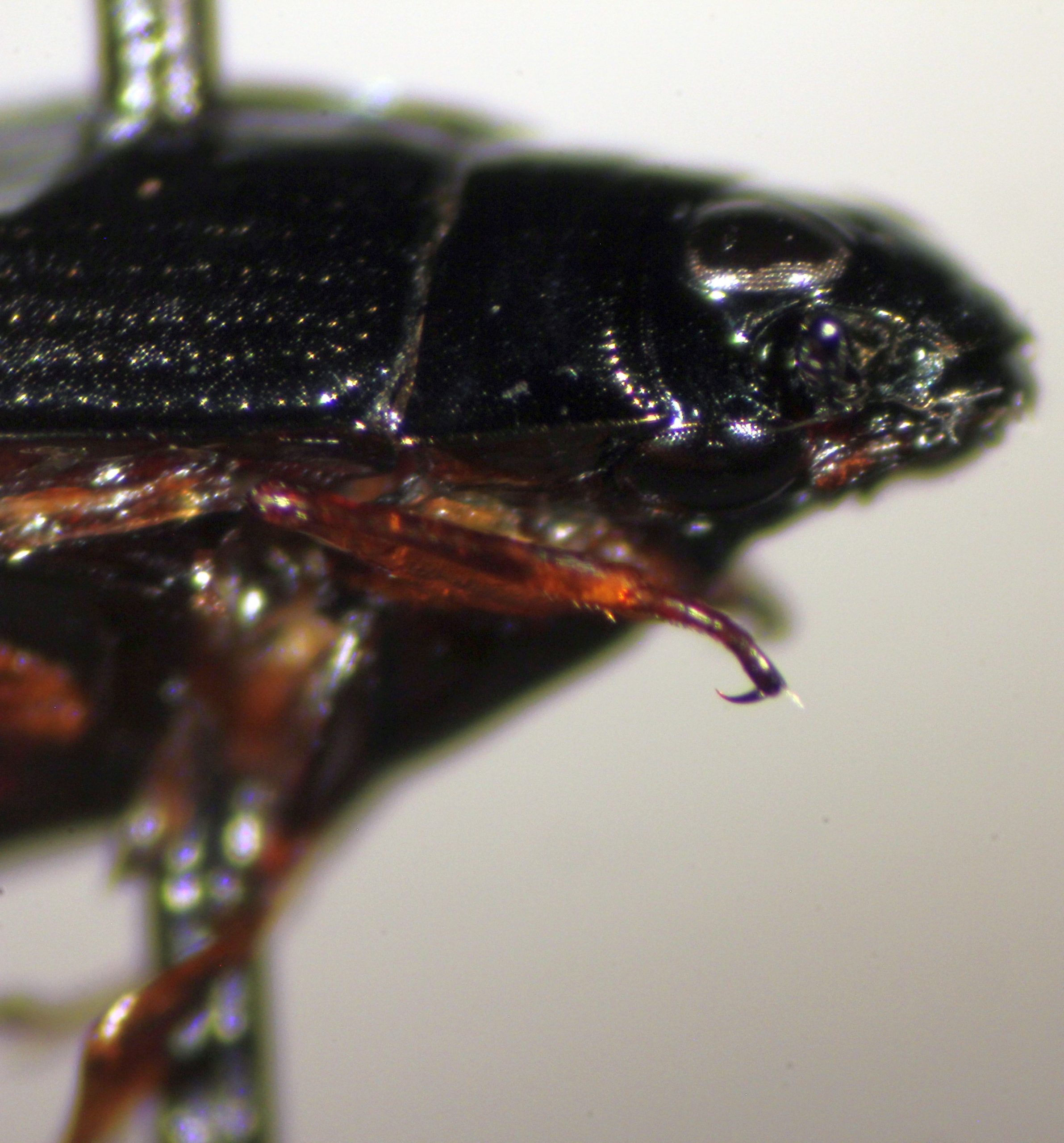


Feedback/Errata